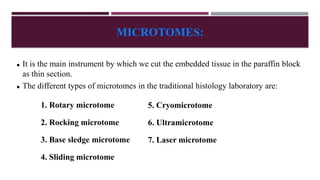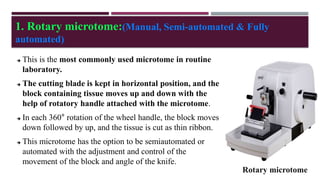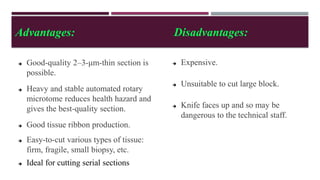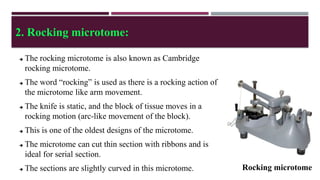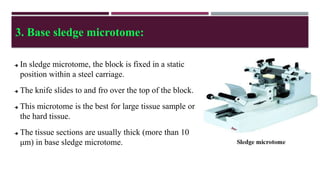1. Microtomy is the process of cutting thin sections of tissue for microscopic examination using a microtome.
2. There are several types of microtomes including rotary, rocking, base sledge, sliding, cryo, ultramicrotome, and laser microtomes. The rotary microtome is most commonly used as it can produce high quality thin sections.
3. Proper maintenance and care of the microtome and knives is important to produce uniform thin sections and avoid damage. Various knife profiles exist for cutting different tissue types.


